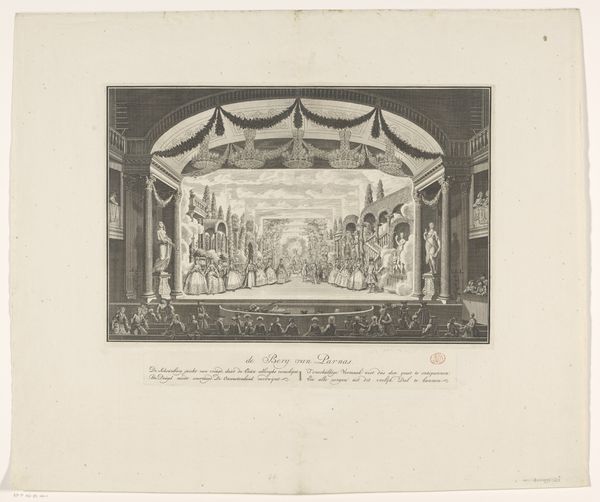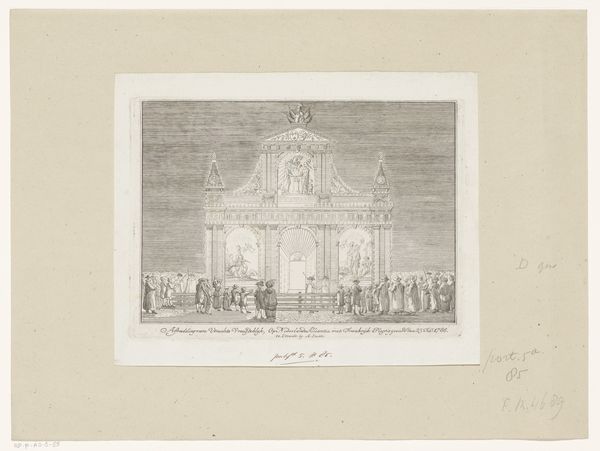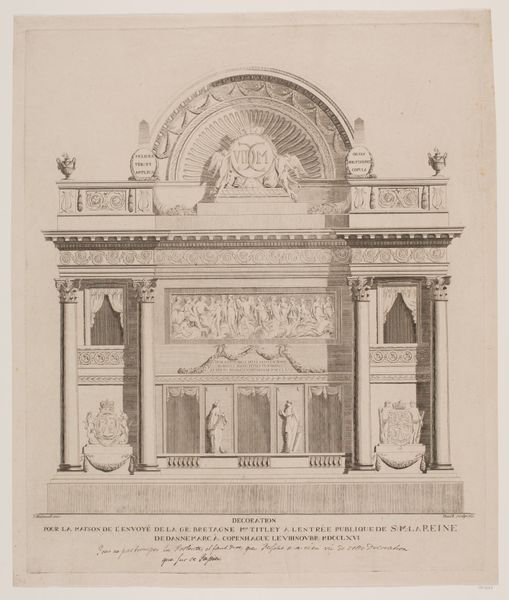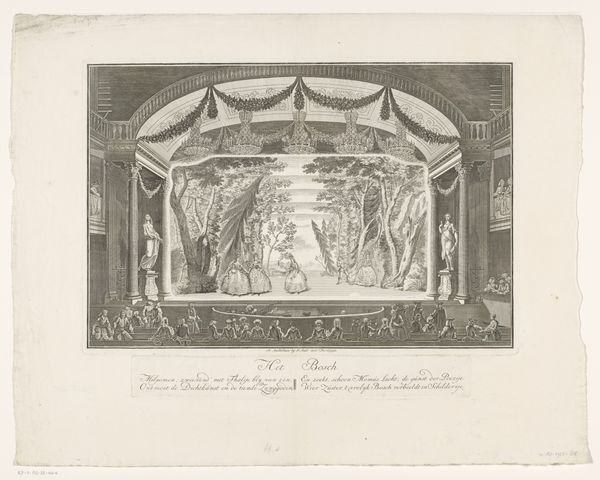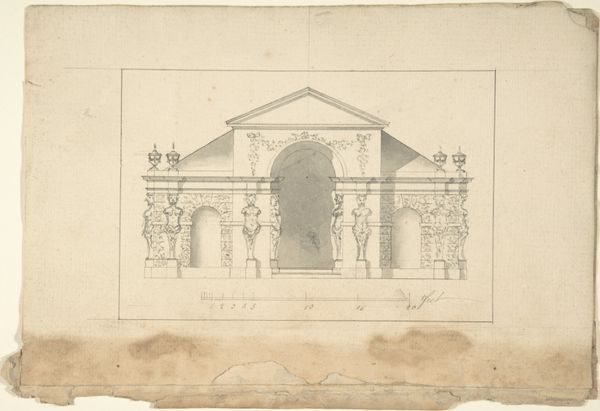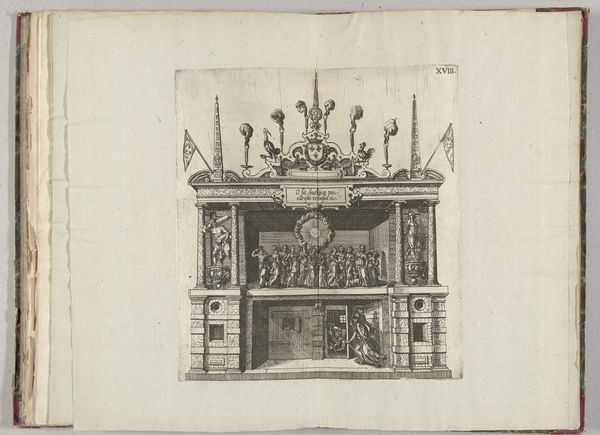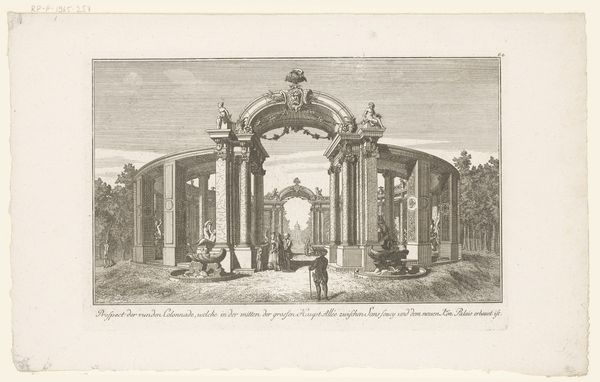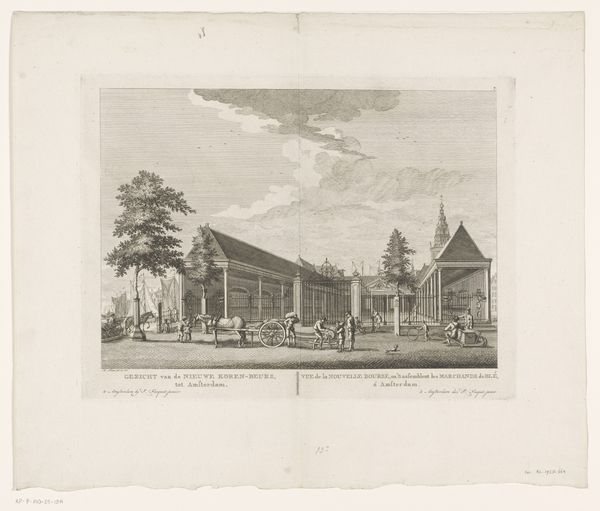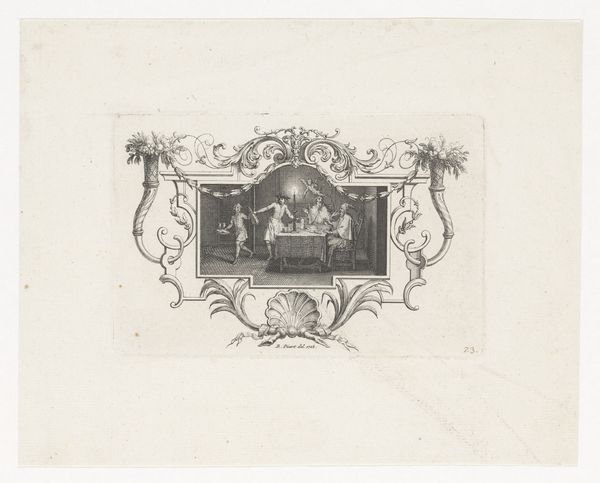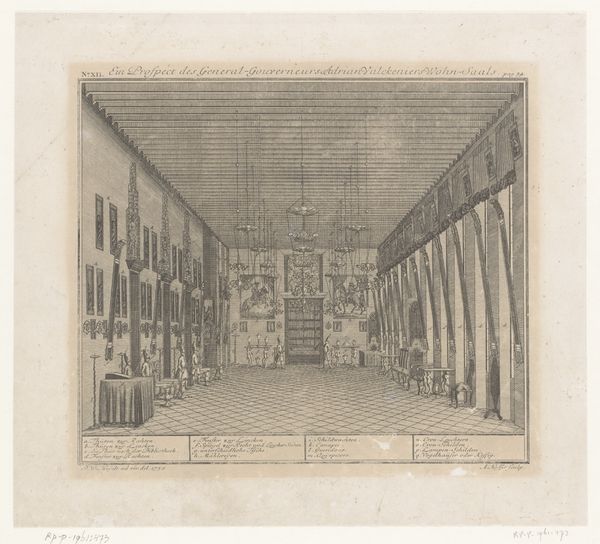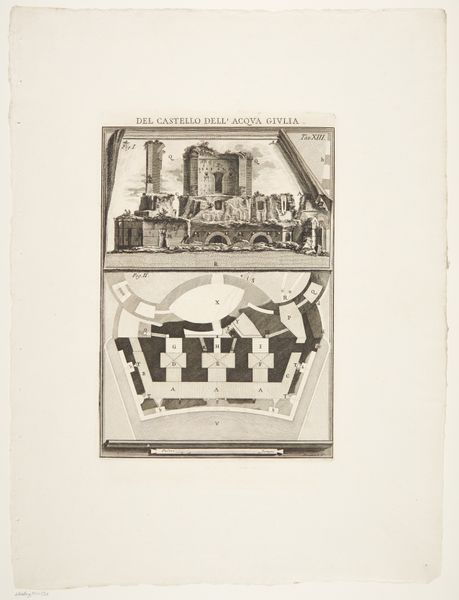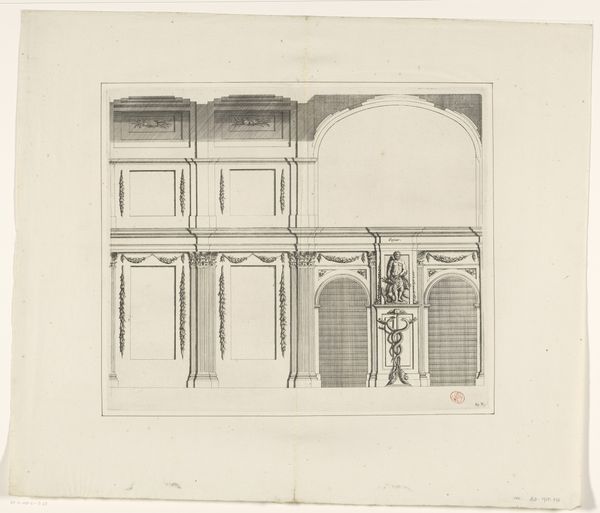
Oostelijke wand van de Krijgsraadzaal in het Stadhuis op de Dam 1661
0:00
0:00
danckerdanckerts
Rijksmuseum
drawing, print, intaglio, paper, engraving, architecture
#
drawing
#
baroque
# print
#
intaglio
#
paper
#
geometric
#
line
#
cityscape
#
engraving
#
architecture
#
realism
Dimensions: height 340 mm, width 444 mm
Copyright: Rijks Museum: Open Domain
Editor: So, this is "Oostelijke wand van de Krijgsraadzaal in het Stadhuis op de Dam" by Dancker Danckerts, created in 1661. It's a print, an engraving, with both drawing and intaglio on paper depicting the Eastern wall of the Council of War chamber. It’s amazing how detailed the architecture is rendered through simple lines! It feels very precise, almost like an architect’s blueprint. What’s your interpretation of this drawing, given the socio-political climate of the time? Curator: Precisely! It’s crucial to understand this print within the context of the Dutch Golden Age and Amsterdam's burgeoning power. This isn't just a depiction of a room; it’s a statement of civic pride and power, mediated through the lens of architectural representation. Consider the role of the Stadhuis itself—Amsterdam’s city hall. Editor: Right, the seat of government… almost like a stage for political theater? Curator: Absolutely! Think about what this room would have been used for - decisions about war and peace, diplomacy, trade... the very operations that shaped the Dutch Republic's identity. Danckerts is not just showing us walls and windows but projecting an image of controlled, rational power. How do you see this 'rational power' conveyed here, visually? Editor: Maybe the symmetry? It feels so balanced and orderly. It creates a feeling of control, which reflects well on the governing forces inside the building. Also, printing technology itself contributes to that controlled image...mass producible architectural drawings representing mass consensus, a group making unified decisions. Curator: Indeed. Prints like these were not only documentation but also powerful propaganda tools, circulating images of Dutch power and sophistication throughout Europe and beyond. Considering this work as 'public art' makes it relevant to contemporary discussions about art’s purpose in promoting political imagery, even today. Editor: I hadn’t considered it as a form of propaganda, but that adds another layer of understanding. Thanks, it gives me a lot to think about! Curator: My pleasure!
Comments
No comments
Be the first to comment and join the conversation on the ultimate creative platform.
